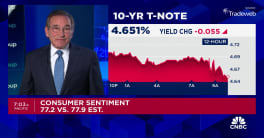Freddie Mac said on Wednesday that its Multi-Indicator Market Index (MiMi) still shows that, at the national level, housing is continuing to stabilize. Thirty-eight of the 50 states plus the District of Columbia are now showing an improving three-month trend as are 40 of the 50 largest metro areas. However, at the same time last year, 47 states plus the District of Columbia, and 47 of the top 50 metro areas were showing an improving three month trend.
MiMi monitors and measures the 50 state and 50 metro areas by looking at home purchase applications, payment-to-income ratios (changes in home purchasing power based on house prices, mortgage rates and household income), proportion of on-time mortgage payments in each market, and the local employment picture. From this the company creates a composite MiMi value for each market to show, at a glance, where each stands relative to its own stable range of housing activity and whether it is moving closer to, or further away from, its stable range. A market can fall outside its stable range by being too weak to generate enough demand for a well-balanced housing market or by overheating to an unsustainable level of activity.
The national MiMi increased by 0.37 percent from November to December to stand at 74.9 percent. There is a positive 3-month trend of 1.09 percent and the national market has improved by 4.41 percent on a year-over-year basis.
The nation's all-time MiMi high of 121.7 was April 2006; its low was 57.2 in October 2010, when the housing market was at its weakest. Since that time, the housing market has made a 31 percent rebound.
Sixteen states and the District of Columbia are now in a stable range led by the District (97.6), North Dakota (97.2), Montana (91.1), Hawaii (89.9) and Wyoming (89.1). Three new metropolitan areas, Buffalo, Boston, and Nashville entered their stable ranges, bringing that total to 11 led by Los Angeles (86.4), Austin (86.3), San Jose (83.9), Houston (83.3), and Pittsburgh (83.3).
Nevada improved its standing by nearly 20 percent year-over-year followed by Colorado, Rhode Island, Illinois, and Ohio all of which improved by between 9 to 12 percent. The most improved metro areas on an annual basis were Las Vegas which nearly matched its state's performance, Denver, Chicago, and Providence, all improving by low double digits.
Freddie Mac noted that it is continuing to keep an eye on markets with deep ties in energy and have seen some deterioration from the previous month in some of those markets. Louisiana, for example, as seen employment worsen over the last several months which has caused the states MiMi score to move from 86.7 in April 2014 to a current 80.2
Freddie Mac Deputy Chief Economist Len Kiefer said, "Housing markets are getting back on track. The national MiMi improved for the fourth consecutive month. Nearly 80 percent of the state and metro housing markets MiMi tracks are improving or in their stable range of activity. We've even seen the MiMi purchase application indicator increase 0.07 percent on a year-over-year basis. Low mortgage rates and moderating house price growth are helping to keep payment-to-income ratios favorable for the typical family in most of the country. In fact, Los Angeles is the only metro market with an elevated MiMi payment-to-income indicator whereas most other markets remain quite affordable. And of course, labor markets are generally improving.







